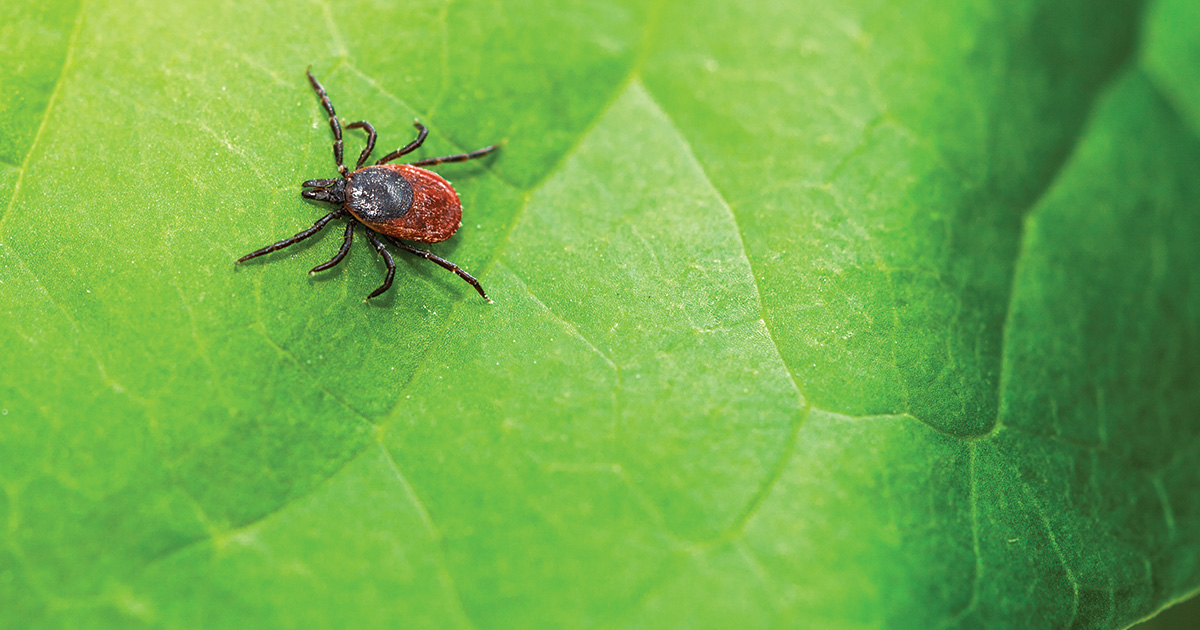
It’s no secret that tick populations across the U.S. have exploded this year, reaching unprecedented numbers. The surge has been a frequent topic in recent news with experts reporting an all-time high. In fact, Michigan is home to over 20 known tick species, with wood ticks and deer ticks accounting for approximately 90% of ticks found in the state. These ticks may carry diseases like Rocky Mountain spotted fever, tularemia, Lyme disease, and more, so it’s important to take precautionary steps to prevent you and your loved ones from getting bitten.
“The best way to prevent tick bites is to wear long, light-colored clothing, including high socks, long pants (tucked into socks), and long-sleeved shirts when outdoors,” said Dr. Amanda Roath, primary care physician at McLaren Greater Lansing Primary Care- Okemos. “This helps prevent the tick from coming into contact with your skin, and light colors will make it easier to spot a tick.”
You can also use tick repellent or bug repellent containing DEET. When using DEET-based sprays, apply them to your skin cautiously, as excessive amounts can cause skin irritation. Other ingredients in bug repellent spray that are effective for tick prevention include IR3535 and picaridin.
“However, talk to your health care provider about recommendations for using DEET on your child due to the irritation it can cause for some,” said Dr. Roath. “Used as directed, products that contain DEET appear to be safe for children older than two months of age. However, guidelines suggest products with more than 30 percent DEET should not be used on children.”
When going for a walk or hike, stay on the path. Do not veer off into high grassy areas, and always do a thorough full-body check and/or take a shower after being outdoors in potentially tick-infested areas.
If you are bitten by a tick, Dr. Roath advises removing the attached tick as soon as possible by using fine-tipped tweezers to grab the tick as close to the skin as possible and steadily pulling upward (do not twist). After removing the tick, clean the bite with soap and water or rubbing alcohol. Taking a picture of the tick or putting it into a tight container to show your doctor will help with identification and can aid a medical professional in providing appropriate treatment options if needed. The last step is to make an appointment to be seen.
“Depending on your symptoms, how the infected area looks, and what we know about the tick that bit you, you may be prescribed medications,” said Dr. Roath.
A tick bite may look like any other insect bite. However, if you are bitten with a tick that does carry Lyme disease, you may notice a “bullseye” rash. This will be a red area where the bite occurred, surrounded by normal skin color, then a larger red ring around the area. Symptoms of Lyme disease can start days to weeks after the bite or even take months to show up. Common early symptoms include fever, headache, body aches, or feeling fatigued. If not treated, serious complications such as paralysis of half of the face or infections can occur.
“Always have open communication with your health care provider about your symptoms and if you notice any changes. The faster we can treat you, the better the outcome will be,” said Dr. Roath.
If you are looking for a new primary care provider, click here to view a list of providers accepting new patients.
For more articles and health and wellness by McLaren Greater Lansing, click here.